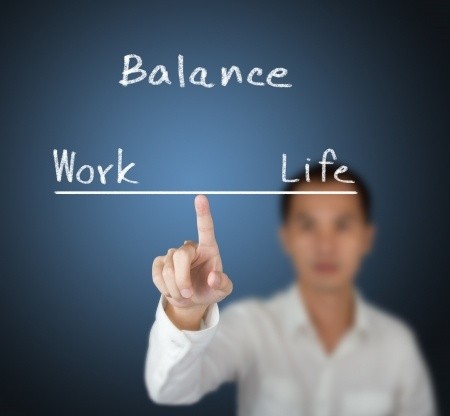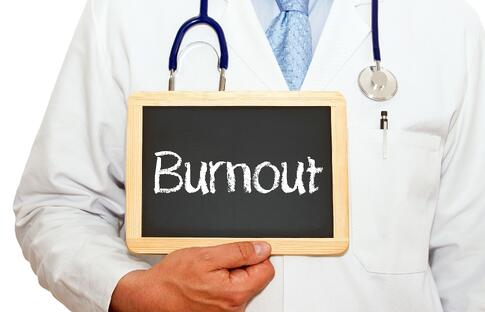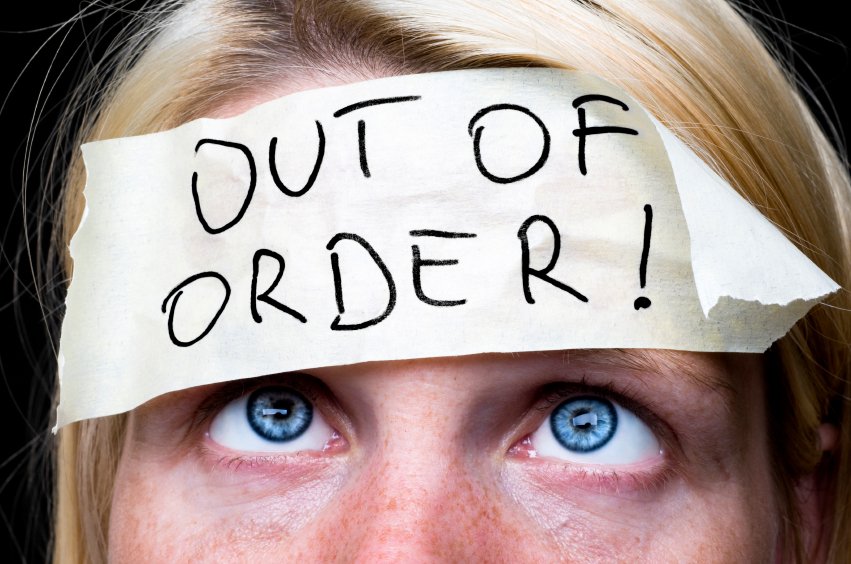
It’s hard to get rid of a medical condition you don't know you have, and that's often the case with burnout. Many people with burnout don't know they have hit this debilitating last stage of chronic stress until their health, spouse, or colleague, lets them know that there's something seriously wrong here.
Burnout creeps up gradually over a long period of time, draining coping resources and amping up harmful stress side-effects until we morph into a shadow of ourselves. The stealth takeover makes it hard to realize what's going on until we have been in burnout's grip far too long.
People who reach out to me with burnout cite a series of mysterious burnout symptoms—chronic exhaustion, lack of energy, purpose, and drive, the inability to perform their job with the command they used to, the cynicism they feel about what they used to love to do. They have sought out doctors and searched online, trying to figure out how they got something none of us are trained to expect.
It's hard to believe that the very thing you have spent your life training for and have always done better than anything else, work, is the cause of a serious health problem that renders you incapable of working-till-you-drop anymore or finding any joy in your life. Unfortunately, the brain and body have limits that, if pushed far enough, long enough drive us beyond capacity.
For people who have always defined themselves by their beyond-the-call-of-duty work ethic, it can seem bizarre to find you don't have any drive anymore. It's certainly not something you want to advertise to others in a world where promotions are connected to endurance. Keeping it quiet causes more time to pass in a state of chronic stress, doing more damage to your body and shredding attention and self-regulation at work.
THE SECRET SCOURGE
Burnout has long been the secret scourge of the workplace, those with it suffering in silence and organizations unaware of the toll it takes on productivity, the bottom-line, and top talent.
In an unbounded 24/7 digital world, the days of ignoring burnout are getting harder to pull off. A Gallup survey found that 23% of workers report being burned out very often or always, while another 44% feel burnout sometimes. That is almost two-thirds of employees.
Some 77% of employees questioned for a Deloitte survey reported they have had burnout, with 70% saying their companies are not doing enough to address it. Half of millennials said they left a job because of burnout.
Burnout has become enough of a concern that the World Health Organization has upgraded its literal textbook burnout definition in the 2022 edition of its International Classification of Diseases, calling it “an occupational phenomenon” that comes from “chronic workplace stress that has not been successfully managed.”
The only way to reduce rampant burnout is to pull back the secrecy and mystery surrounding this destructive condition. When more know what it feels like, we can prevent ourselves from overdoing it, speak up earlier, reach out faster to recover more quickly, and management can understand burnout's massive impact on the bottom-line, so stress management programs become essential employee support. Health costs for burnout are five times that of other workplace maladies, driven by problems from hypertension to diabetes.
WHAT BURNOUT FEELS LIKE
Burnout occurs after a long period of chronic stress during which all energetic resources—stress hormones, physical and mental vitality, positive emotions, willpower, resilience—all coping reserves, have been drained. We wind up fully depleted in a three-way shutdown: emotional exhaustion, physical fatigue, and cognitive weariness.
You feel chronically exhausted, weary to the bone, soured on work and life, and devoid of motivation or the ability to fight off the feelings of dread and doom. Deep into burnout, even the thought of work can make you feel sick. The darkness has some crossover with depression, but studies show they are two different beasts.
Since burnout is written and directed by stress, brains fixate on catastrophic thoughts from a part of the ancient brain that specializes in fear and irrational emotions. Thoughts turn to pessimism and vulnerability, as they do when we get sick and don’t have physical strength at our disposal.
There is nothing left to battle the downward spiral. We withdraw from others into a bunker, unable to shift mood, with thoughts marked by an absence of positive emotions, a sense of futility, and cynicism that anything can be different. The mind becomes a hub for worst-case scenarios.
THE DIFFERENCE BETWEEN BURNOUT AND FATIGUE
How do you know if you are just tired or are burned out? When you are tired, sleep, rest, and hobbies can help you recover from physical exhaustion. Your mind can shift mood and find a way around a problem.
With burnout, the fatigue doesn’t go away even if you get all your sleep. The weariness is there every day, even on the weekend, as is the negative rumination and mental cut-de-sac.
Fatigue doesn’t cause an absence of positive emotions or hijack the mind with false beliefs and no-way-out, bleak thoughts. It's a temporary physical issue. Burnout crowds out positive emotions with all-negative, all-the-time.
You might want to be by yourself for a moment if you're tired, but you are not going to close yourself off to the outside world for months on end. That's burnout. You withdraw from others, known as depersonalization, retreating from a world that appears to care less about you.
When you're tired, taking part in fun activities energizes and restores mood and vitality. When you're burned out, things you used to do for fun no longer provide enjoyment. Pessimistic thinking constricts the brain to dire ruminations set off by burnout triggers like these:
— Long periods of extreme workload
— Excessively long workweeks
— No time for recharging
— Unreasonable deadlines
— Poor to no communication and support from superiors
— Unfair treatment that destroys trust
THE HEALTH CONDITIONS CAUSED BY BURNOUT
Of course, there are many other ways to tell the difference between burnout and fatigue, namely, the host of health issues that come with burnout that are missing from mere tiredness.
Burnout is the result of unmanaged, chronic stress for months and sometimes years. This makes burnout highly dangerous, since the stress response alters systems in the body key to health that aren’t needed in a life-or-death moment or are amped up to risky levels to allow us to fight or run from danger.
The stress response shuts down the digestion system and suppresses the immune and tissue repair systems. It jacks up the heart rate and blood pressure. These effects are meant to happen for brief periods, not for months and years, or they do a lot of damage.
So that we really understand the boomerang of burnout, let’s take a look at all the impacts of burnout—physical, psychological, and professional—as gleaned from a comprehensive meta-study (Salvagioni, Nesello Melanda, Mesas, Gonzalez, Gabai, and de Andrade) that looked at 993 different studies associated with burnout.
Physical Consequences:
- hypercholesterolemia – high cholesterol
- type 2 diabetes
- coronary heart disease
- hospitalization due to cardiovascular disorder
- musculoskeletal pain
- changes in pain experiences
- prolonged fatigue
- headaches
- gastrointestinal issues
- respiratory problems
- severe injuries and mortality below the age of 45 years
Psychological Effects:
- insomnia
- depressive symptoms
- use of psychotropic and antidepressant medications
- hospitalization for mental disorders and psychological ill-health symptoms
And there are plenty of impacts on the organization as well from talent that is demotivated and disengaged, as the study reports below. Productivity plummets when burnout takes over a team or company. Its main characteristics—exhaustion, cynicism, and inefficacy—are the opposite of those of engagement—energy, commitment, and effectiveness—burnout scholar Christina Maslach has reported. The more exhaustion, the less attention and more effort and time it takes to get the job done.
Professional Effects:
- job dissatisfaction
- absenteeism
- new disability pension
- job demands
- presenteeism
THE PASSIVITY TRAP
The most insidious part of burnout is that it steals one of our most important behaviors, autonomy, which is one of our core psychological needs. Burnout can lead to a kind of learned helplessness that makes us give up the helm of life. We can’t summon up the usual coping tools to change thoughts or to formulate action.
In fact, one of the prime markers of burnout is passivity. Because we are so out of gas and feeling so low, we stop trying to find ways out of the bind. This leads to more feelings of inadequacy from lack of agency and neglecting the need we all have to determine our path on this planet.
This might be the clearest signal of burnout, turning our back on ourselves, on our own determination and potential, and letting the negative thoughts in our head drown out the strength we have to rise to the occasion. We can change that, though, by pushing past the false beliefs and thoughts of “why bother” or “nothing will change,” and reaching out for support.
Burnout is so all-encompassing, affecting our very identity as a working professional, it’s hard to escape its grip on your own. Research shows that reaching out to a professional stress management expert, can provide the direction and impetus to break through the stalemate.
If you would like to learn how to get rid of burnout and rebuild crashed resources, reach out for a free burnout consultation by clicking the button below.

















